When I first received the 1905 Alumni Record for the Dickinson College class of 1860, I was a bit overwhelmed. To begin to start to understand more about this class and the individuals in it, I decided to make a data table to compile all the important information on each student. To start my data table, I simply counted all the graduates and non-graduates and added them up. Following this, I briefly skimmed a few entries of the 1905 Alumni Record to see what kind of information it would have on each student. It seemed that each entry could be categorized in fairly basic categories like home state, job field, campus life, etc.
Originally, I was frustrated that the Alumni Record did not have complete data for many of the students for each of my categories, so I would add and take away categories. Eventually I decided on my columns and just put “unknown” if there was no information on a student.
Filling out the data sheet was easy but time-consuming. The most difficult and longest part was getting started and deciding exactly what data I wanted to record. I’ve never done something like this before, so the initial process was somewhat difficult, but once I established a rhythm, it became much easier. I decided to convert the data chart into a bulleted list because it made the data even easier to read and highlighted the most important information. The data chart is good for seeing specific information for each individual student, but the bulleted list is designed to learn about the whole class and see what the class as a whole was involved in.
Once the bulleted list was finished, I chose a few individuals to research more in depth. I decided on a few of the students that had the most information and seemed most interesting. As with most research, the best way to start was with reference sources. Considering that they are all former Dickinson students, I checked the Dickinson encyclopedia first. I used the Dickinson encyclopedia to get more information of course, but also as a test. If a student was not in the Dickinson encyclopedia, I decided to choose another one because it seems logical that if anyone would have information on Dickinson students, it would be Dickinson. This eliminated a few options, and I ended up choosing to study David B Brunner, John Henry Grabill, and Clarence Gearhart Jackson more in depth.
All these students were in the Dickinson encyclopedia, and there was a descent amount of background on them. Brunner taught, was a congressman, and wrote Indians of Berks County. Grabill was born in Virginia, fought for the Confederacy, had ten children, and was a school superintendent. Jackson fought for the Union in the Civil War, was Vice President of Jackson and Woodin Manufacturing, and owned a mansion.
After learning this, I decided to check other sources, including American National Biography Online and Wikipedia, to find more. American National Biography Online yielded no results, as none of the students were quite famous enough. Wikipedia was a little more useful but only had an entry on David B Brunner, which is mostly because he was a congressman from 1889-1893. Brunner’s entry was quite short, but it did mention that he was a Pennsylvania German poet, which was exciting to learn because this information was not in the Alumni Directory or Dickinson encyclopedia.
From here, I went to Google Books to see if more information on Brunner’s poems was available and to find more about the other students. Through Google Books, I found a reference source, A Pennsylvania German Anthology, which contained an entry on Brunner and examples of his poems, which were entirely written in German, and a mentioning of “Goethe Von Berks” as some sort of alias or pen name. His poems and alter-ego were greatly intriguing so I continued to look for more information on them. I found virtually the same short biography on Brunner in Publications, Volume 26 by the Pennsylvania-German Society, but importantly, this source confirmed that Brunner used the pen name, Goethe Von Berks, when writing his German poetry.
Searching John Henry Grabill on Google Books yielded some information but nothing new. He is in the Semi-Centennial Register of the Members of the Phi Kappa Sigma Fraternity, a reference source about the Phi Kappa Sigma Fraternity which he was a part of. In search of more information about his service in the Confederate Army, I went to The American Civil War Research Database. Grabill has an entry in it that gives a bulleted list that mentions his enlistment, marriage, and that he was a prisoner of war. The database was a great reference source because it gave me basic information about Grabill’s life, and it made me want to learn more about his status as a prisoner.
Finally, I searched for Clarence Gearhart Jackson, and I found some very interesting results. In the Reports of the Heads of Departments to the Governor of Pennsylvania 1876, he is listed as an aide-de-camp to Governor Hartranft, but this is not a reference source because it is merely his name in a list, so it is not what I was looking for. Intrigued by his mansion and in search of a reference source, I searched “Clarence G Jackson Mansion” on Google which led me to find a history of Berwick Borough, his home and the site of his mansion. It is a reference source because it provides a brief overview of Berwick designed to give simply a starting point for further research. This overview has an entry about him and more specifically his mansion, which was actually used as Berwick’s City Hall for almost 100 years after the death of Jackson’s wife, Elizabeth. The mansion still stands today, though it’s no longer used as city hall.
Next, I decided to search for Clarence Gearhart Jackson on Ancestry.com to see if he appears in the census or other records. I was very lucky to find him posted in someone’s family tree, meaning that someone else already collected a series of documents and connected it with Jackson. This saved me a lot of time, and I only spent about an hour to go through the documents and report on my findings. This collection included three censuses, a veteran burial card, and pictures of his headstone.
I chose to include the 1870 census, as opposed to the 1850 or 1860 census, because it is the only one to have both of his kids, Jane and Henrietta Jackson. It also includes Elizabeth Jackson, his wife. Interestingly, none of this family’s real names are recorded. Clarence is CG, Elizabeth is Lizzy, Jane is Jenny, and Henrietta is Ettie. Jane appears to be named after Clarence’s sister, who’s also named Jane but goes by Jenny. Interestingly, Clarence’s sister dies the same exact month that his daughter is born.
Jackson died in 1880. Records of this can be found in a census mortality record, a New Jersey and Pennsylvania church and town record, and a Pennsylvania Veteran Memorial card. I chose to include the veteran card because Jackson served in the Civil War and because it has more information than the other sources.
A picture of Jackson’s headstone, described as a “very large monument” on the veteran card, can be found on a link from findagrave.com on Ancestry. Judging by this headstone and knowledge of his role as Vice President of Jackson and Woodin Manufacturing Company, Jackson was quite a wealthy man.
Because finding Clarence Jackson’s information on ancestry.com was so easy, I decided to take another hour to see if I could find census records or anything else on John Henry Grabill. Again, I was lucky to find him to be a part of a family tree, but this one was not nearly as complete as Jackson’s. It only had a record of Grabill being a Confederate prisoner of war.
This was a very exciting find because it confirmed the information from the American Civil War Database. Also, going into the search for Grabill I only had expectations to find census records, so this was quite the surprise.
Another interesting find was an entry on him in a U.S. School Catalog. He is in the catalog along with several other members of the Dickinson class of 1860, and they are all grouped together for their membership in the Phi Kappa Sigma Fraternity. The catalog entry is very similar to the 1905 Alumni Record.
Finally, Grabill is in multiple censuses taken throughout his long lifetime. Here he is in the 1920 census, taken just two years before his death. He lives in an eleven member household, including his wife, six kids, a son-in-law, a servant, and the servant’s son.
To summarize, this research journal took many hours to complete and was frustrating at times, but overall it was fun to go from a data chart about a class of 48 students down to finding real records and primary source documents through ancestry.com on two students.
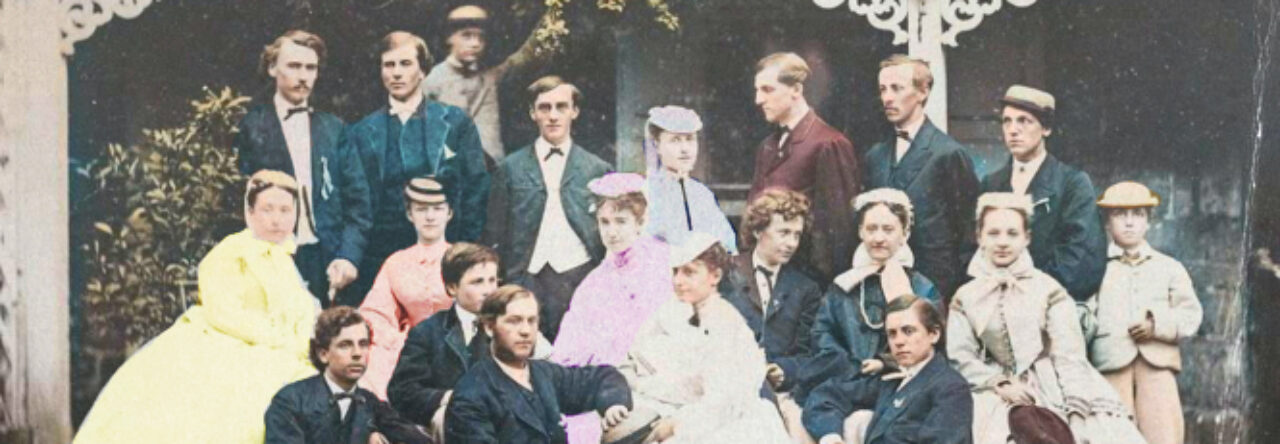
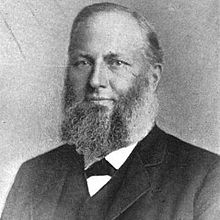

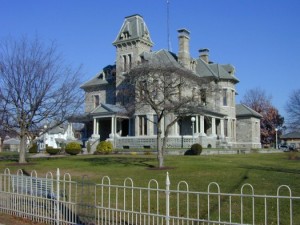

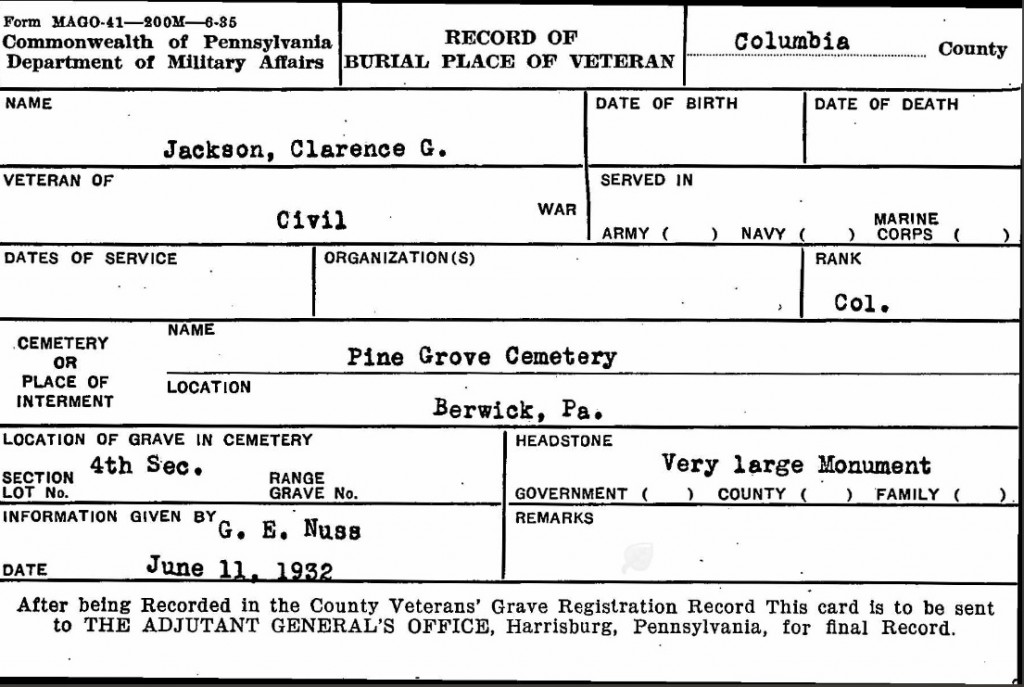
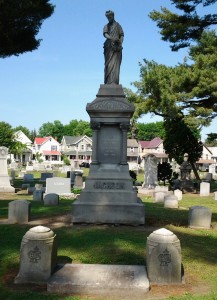


Leave a Reply